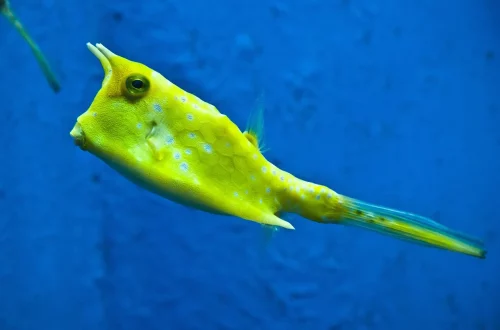
Effective Strategies to Lower Nitrates in Your Fish Tank
Maintaining a healthy aquarium environment is crucial for the well-being of your fish and aquatic plants. One of the most common challenges faced by aquarium enthusiasts is managing nitrate levels in the water. Nitrates are a byproduct of fish waste, uneaten food, and decaying plant matter, and while they are less toxic than ammonia or nitrites, high concentrations can still harm your aquatic life. Elevated nitrate levels can lead to stress in fish, promote algae blooms, and negatively impact the overall balance of the ecosystem within the tank.
Understanding how nitrates accumulate and the factors that contribute to their increase is essential for effective management. Regular water changes, filtration, and the careful selection of tank mates can help mitigate the issue. Additionally, implementing specific strategies tailored to your aquarium’s unique conditions can further reduce nitrates, ensuring a healthy and thriving aquatic environment. By taking proactive measures, you can create a sustainable ecosystem that supports both the aesthetic appeal of your aquarium and the health of its inhabitants.
In this article, we will explore several effective strategies to lower nitrates in your fish tank, helping you achieve a balanced and healthy aquatic habitat.
Regular Water Changes
One of the simplest and most effective methods to control nitrate levels in your aquarium is through regular water changes. This practice not only helps to dilute the concentration of nitrates but also removes other harmful substances that may accumulate over time, such as phosphates and organic waste.
When performing water changes, it is recommended to replace about 10-20% of the tank water weekly. This frequency helps maintain stable water parameters and minimizes stress on your fish. However, the exact amount and frequency can vary based on the bioload of your aquarium. Tanks with a higher number of fish or those that are heavily stocked may require more frequent changes to keep nitrate levels in check.
To effectively carry out a water change, use a siphon or gravel vacuum to remove debris from the substrate while simultaneously extracting water. This method not only helps reduce nitrates but also improves the overall cleanliness of your tank. After siphoning out the desired amount of water, replace it with fresh, dechlorinated water that matches the temperature of the existing tank water. This practice ensures that your fish experience minimal shock due to sudden changes in temperature or chemistry.
In addition to regular water changes, you should also monitor nitrate levels using a reliable test kit. Keeping an eye on these levels will allow you to adjust your water change schedule and maintain a more stable environment for your aquatic life.
Utilizing Live Plants
Incorporating live plants into your aquarium not only enhances its aesthetic appeal but also serves as an effective natural method for lowering nitrate levels. Plants absorb nitrates as part of their nutrient uptake, utilizing them for growth and photosynthesis. This process can significantly reduce the concentration of nitrates in the water, creating a more balanced environment for your fish.
When selecting plants, consider species that are known for their high nutrient-absorbing capabilities. Fast-growing varieties, such as hornwort, water sprite, and duckweed, are particularly effective at consuming excess nitrates. Additionally, plants with a dense root system can help stabilize the substrate and compete with algae for nutrients, further promoting a healthier ecosystem.
To maximize the benefits of live plants, provide them with adequate lighting and nutrients. A well-lit aquarium encourages plant growth, which in turn leads to increased nitrate absorption. Additionally, consider using liquid fertilizers specifically designed for aquatic plants to ensure they receive the necessary nutrients to thrive.
It’s also important to maintain regular trimming and pruning of your plants. Overgrown plants can create shaded areas, limiting growth and nutrient uptake. By keeping your plants healthy and well-maintained, you can enhance their ability to absorb nitrates and contribute to the overall health of your aquarium.
Investing in Quality Filtration Systems
A high-quality filtration system is essential for maintaining a healthy aquarium, as it plays a crucial role in managing nitrate levels. Filters work to remove debris, toxins, and harmful substances from the water, promoting a cleaner environment for your fish. However, not all filtration systems are created equal, and investing in the right type can make a significant difference in nitrate management.
There are several types of filters available, including mechanical, chemical, and biological filters. Each type serves a unique purpose, but for controlling nitrates, biological filtration is particularly important. Biological filters use beneficial bacteria to break down waste products, converting harmful substances into less toxic forms. This process, known as nitrification, ultimately helps to reduce nitrate levels in the aquarium.
When selecting a filtration system, consider the size of your tank and the type of fish you keep. A filter rated for a larger tank may be necessary for heavily stocked aquariums to adequately handle the bioload. Additionally, ensure that your filter allows for sufficient water flow, as stagnant water can lead to dead zones where waste accumulates.
Regular maintenance of your filtration system is also crucial. Clean or replace filter media as needed to prevent clogging and ensure optimal performance. Some aquarists opt for additional filtration methods, such as nitrate-reducing media or denitrators, to further enhance nitrate management in their aquariums.
Controlling Feeding Practices
Feeding practices play a significant role in determining nitrate levels in your aquarium. Overfeeding is a common issue among aquarists, leading to uneaten food decomposing in the tank and contributing to increased nitrate levels. It’s essential to establish a feeding routine that minimizes waste while ensuring your fish receive adequate nutrition.
To control feeding, observe your fish and determine the amount they consume in a few minutes. This “feeding test” will help you gauge the appropriate portion size for your specific species. It’s generally advisable to provide small amounts of food multiple times a day rather than a large quantity all at once. This approach not only reduces waste but also mimics natural feeding behaviors, promoting a healthier environment for your fish.
Additionally, consider the types of food you are offering. High-quality pellets or flakes that are specifically formulated for your fish species can help reduce waste compared to cheaper options. You may also incorporate a variety of food types, including frozen or live foods, which can stimulate your fish’s natural hunting instincts and promote better digestion.
Lastly, regularly remove any uneaten food from the tank after feeding. This practice prevents food from breaking down and contributing to nitrate buildup in the aquarium. By being mindful of your feeding practices, you can significantly impact nitrate levels and create a healthier habitat for your aquatic life.
In conclusion, managing nitrate levels in your aquarium is essential for maintaining the health and well-being of your fish and plants. Regular water changes, live plants, quality filtration systems, and controlled feeding practices are all effective strategies to lower nitrates. By implementing these measures, you can create a balanced and thriving aquatic environment.
**Disclaimer:** This article is not intended as medical advice. For any health-related concerns, please consult a healthcare professional.




